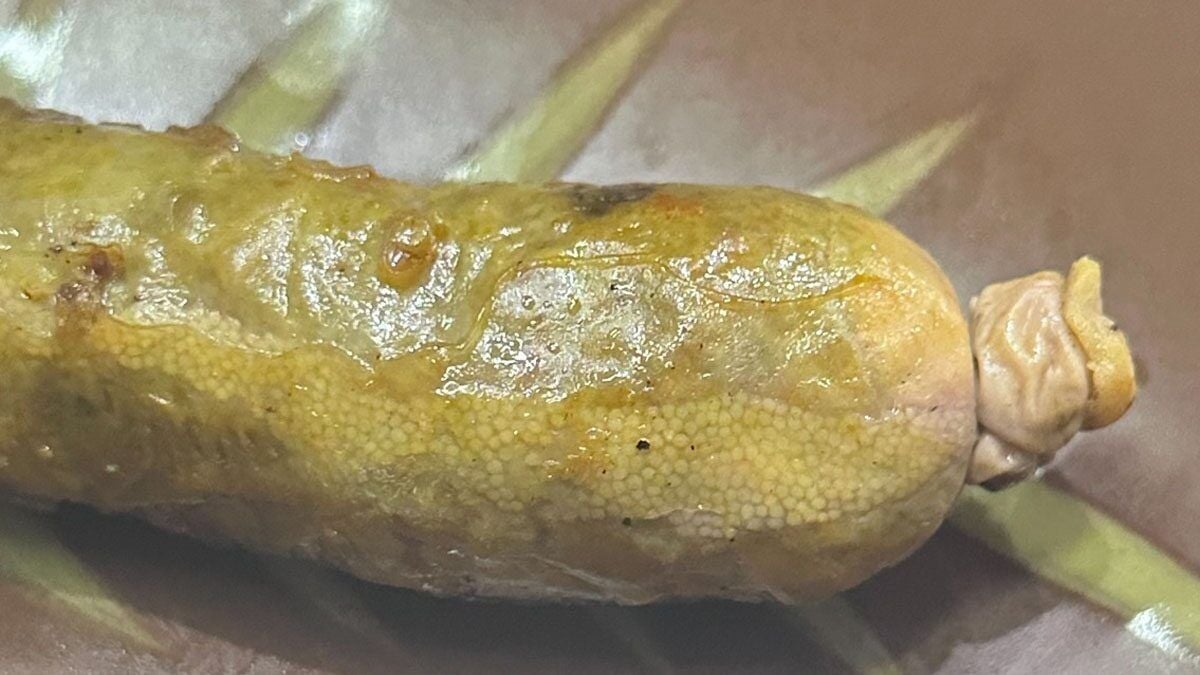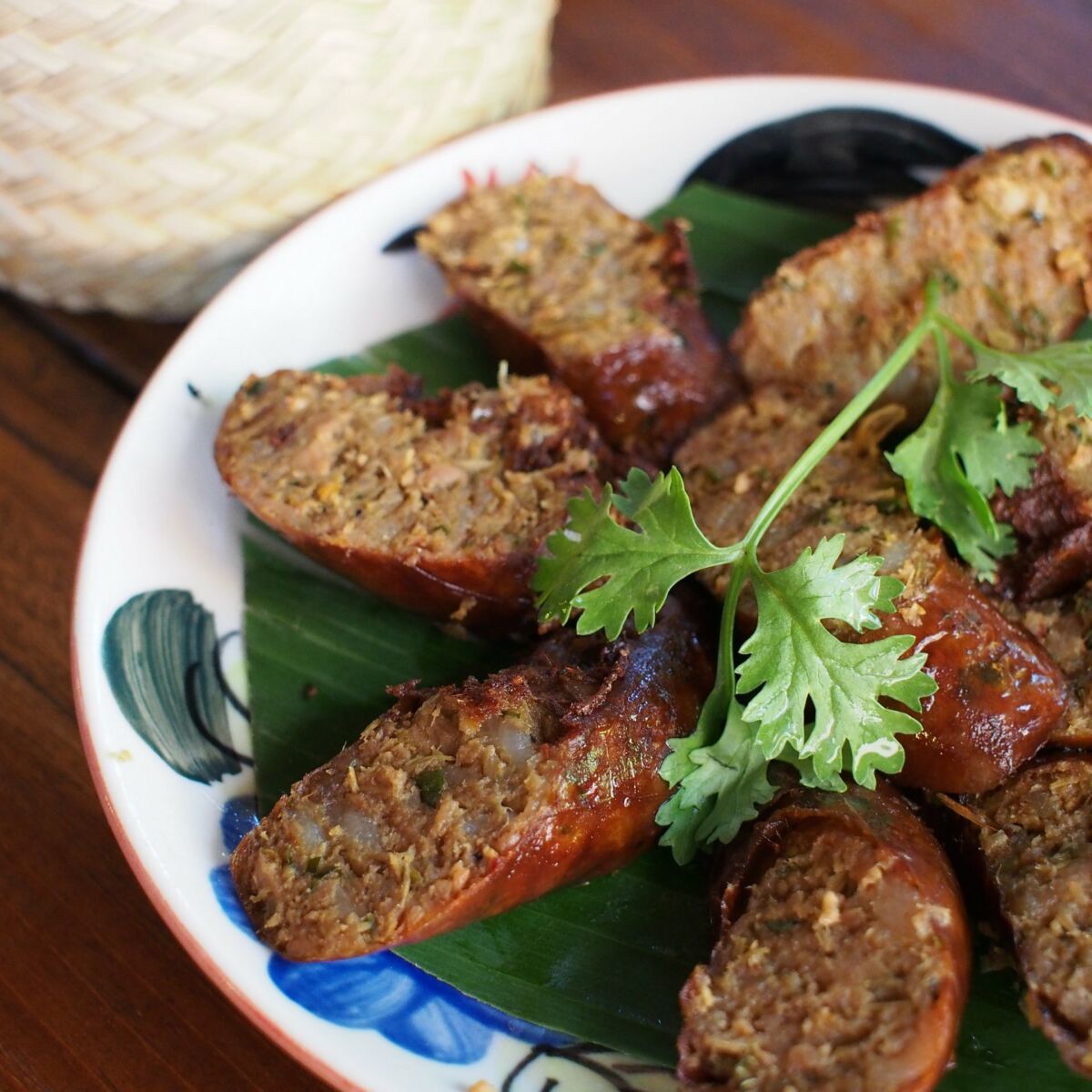Spot the difference: Thai sausage takes a grilling on social media

A seemingly innocuous photo of a beloved northern Thai sausage, sai ua, has set social media on fire after a curious consumer posted a picture laden with mysterious white spots.
The image, shared on the Facebook group We Are Consumers, saw the worried buyer questioning the safety of the sausage, causing a flurry of responses and culinary curiosity.
With a sense of unease, the poster asked, “Can anyone tell me what this is? I bought this sai ua but am now too scared to eat it.”
The picture showed countless white spots speckling the sausage’s surface, leaving the buyer—and many others—wondering.
As the post gained steam, it attracted the attention of a former sausage vendor, who was quick to slice through the confusion.
“Those are just part of the sausage casing. When using dried casings, these spots appear quite frequently during the stuffing process and are most visible at the beginning or end of the sausage.”

Adding to the chorus, another user with a penchant for traditional northern Thai cuisine chimed in, explaining that the white spots are far from freakish.
“If the casing isn’t tied securely, it can’t be grilled or fried properly. Anyone from the north has likely come across this. The white spots are fibrous tissue, probably indicating the casing is thick.”
An industry insider reassured the jittery customer, cementing the case for sai ua’s safety.
“It’s the casing. I’ve sold ‘mam,’ a type of northern sausage, and it has similar spots. It’s perfectly safe to eat.”
The online uproar spotlights the complexities and quirks of traditional food preparation that might catch some consumers off guard, notably those unacquainted with regional delicacies. Thai cuisine, with its rich diversity, often features textures and appearances that, while initially baffling, are integral to its authentic culinary charm.
This lively digital dialogue underscores the importance of community platforms where consumers can seek advice and share wisdom. Social media proves its mettle once again, demystifying culinary conundrums and ensuring people can shop and eat with confidence.
More than just a spat over sausage, the incident underscores the value of preserving time-honoured culinary techniques and the knowledge they bring. As traditional meets modern, understanding these practices can help bridge culinary divides, deepening our appreciation for the richly woven tapestry of Thai cuisine.
So, next time you spot something puzzling in your pad Thai or curious in your curry, remember: there’s a community ready to dish out the details and keep your culinary adventures safely on track.
Frequently Asked Questions
Here are some common questions asked about this news.
Why do traditional Thai sausages like sai ua have white spots on their casing?
The white spots are part of the natural fibrous tissue in dried casings, common in traditional preparation methods.
How can social media platforms influence consumer confidence in traditional foods?
They offer a space for knowledge sharing and reassurance, helping demystify unfamiliar culinary elements.
What role does community knowledge play in preserving traditional culinary practices?
Community insights help maintain and appreciate authentic practices, bridging traditional and modern culinary expectations.
What if consumers misunderstand traditional food characteristics due to unfamiliar appearances?
Misinformation can lead to unwarranted concerns; hence, education and community dialogue are crucial.
How does understanding traditional preparation methods enhance the appreciation of Thai cuisine?
It allows consumers to embrace diverse textures and appearances, enriching their culinary experiences.
Latest Thailand News
Follow The Thaiger on Google News:


























